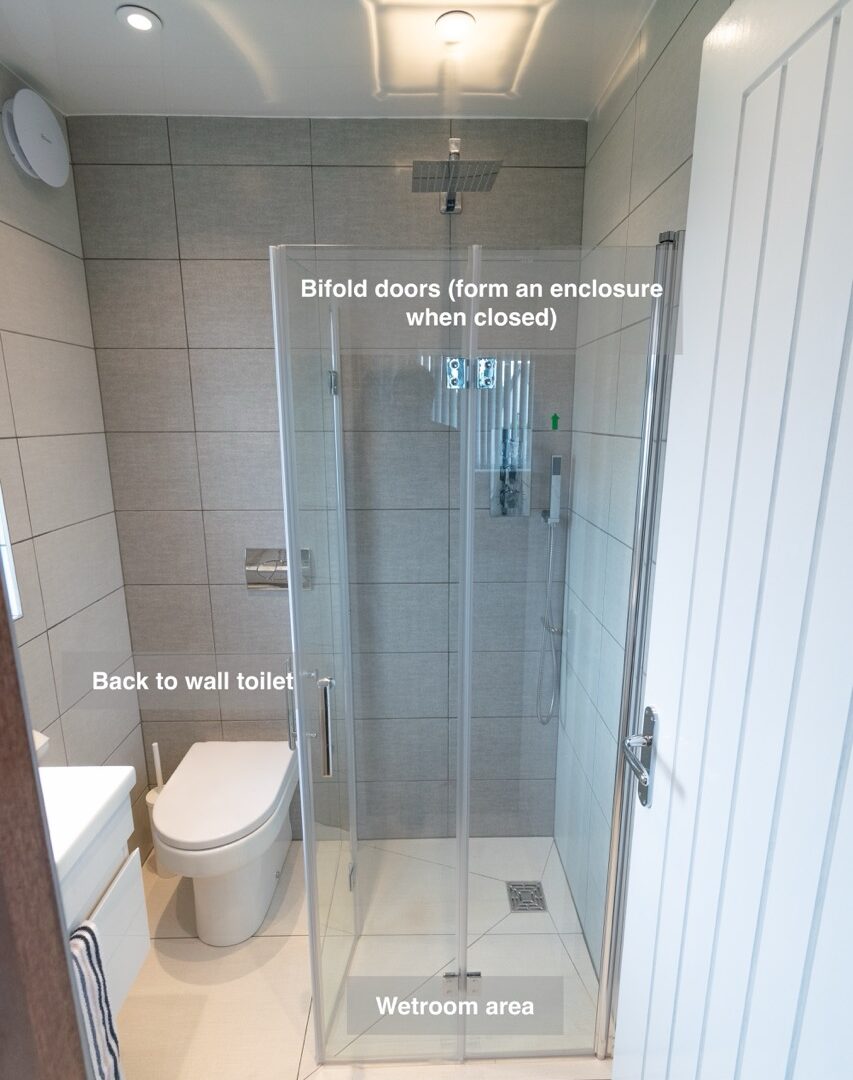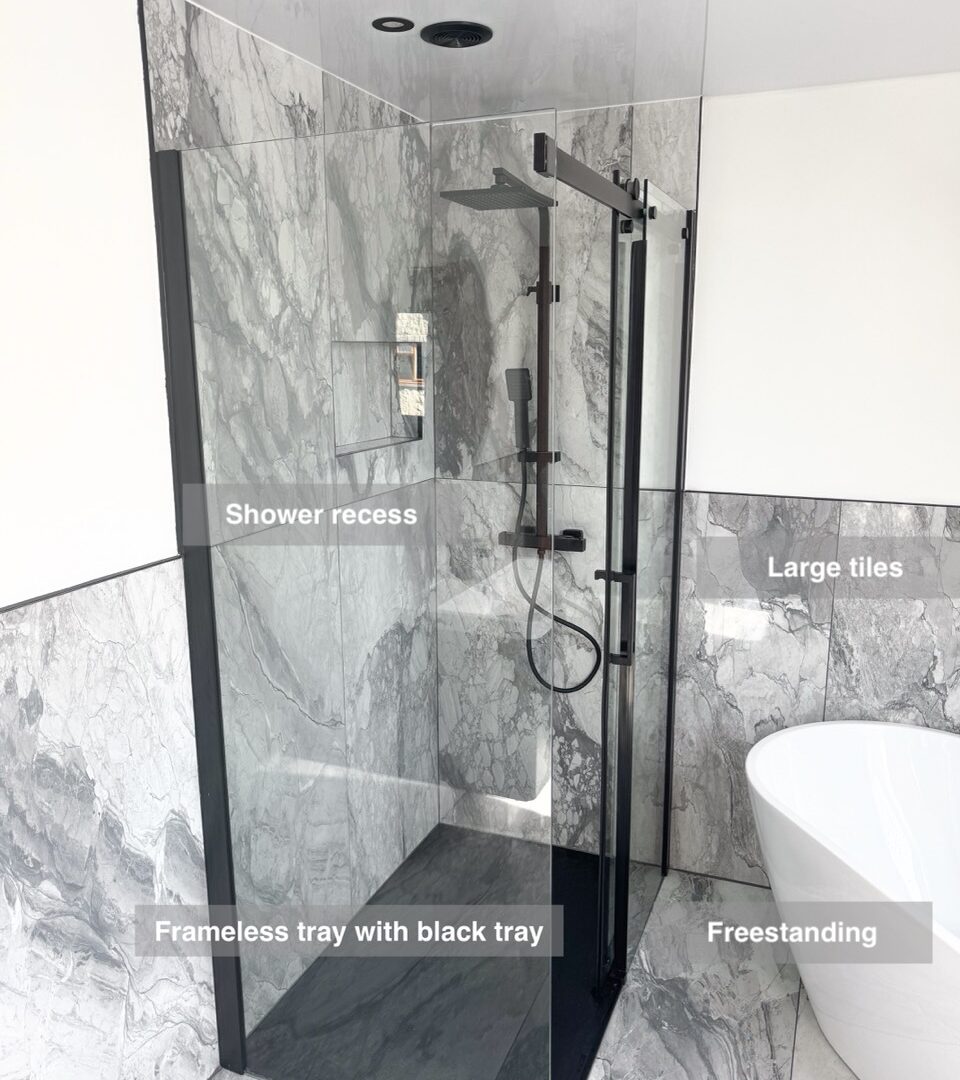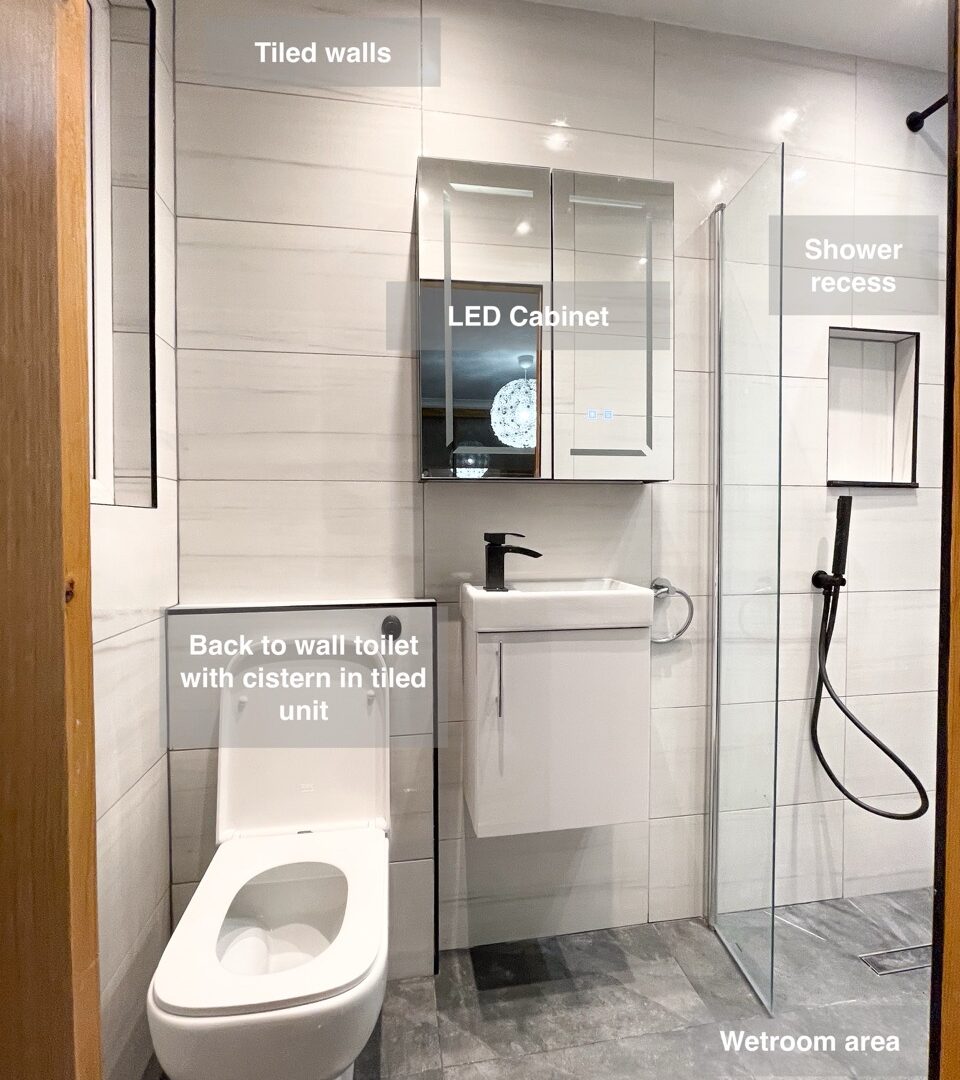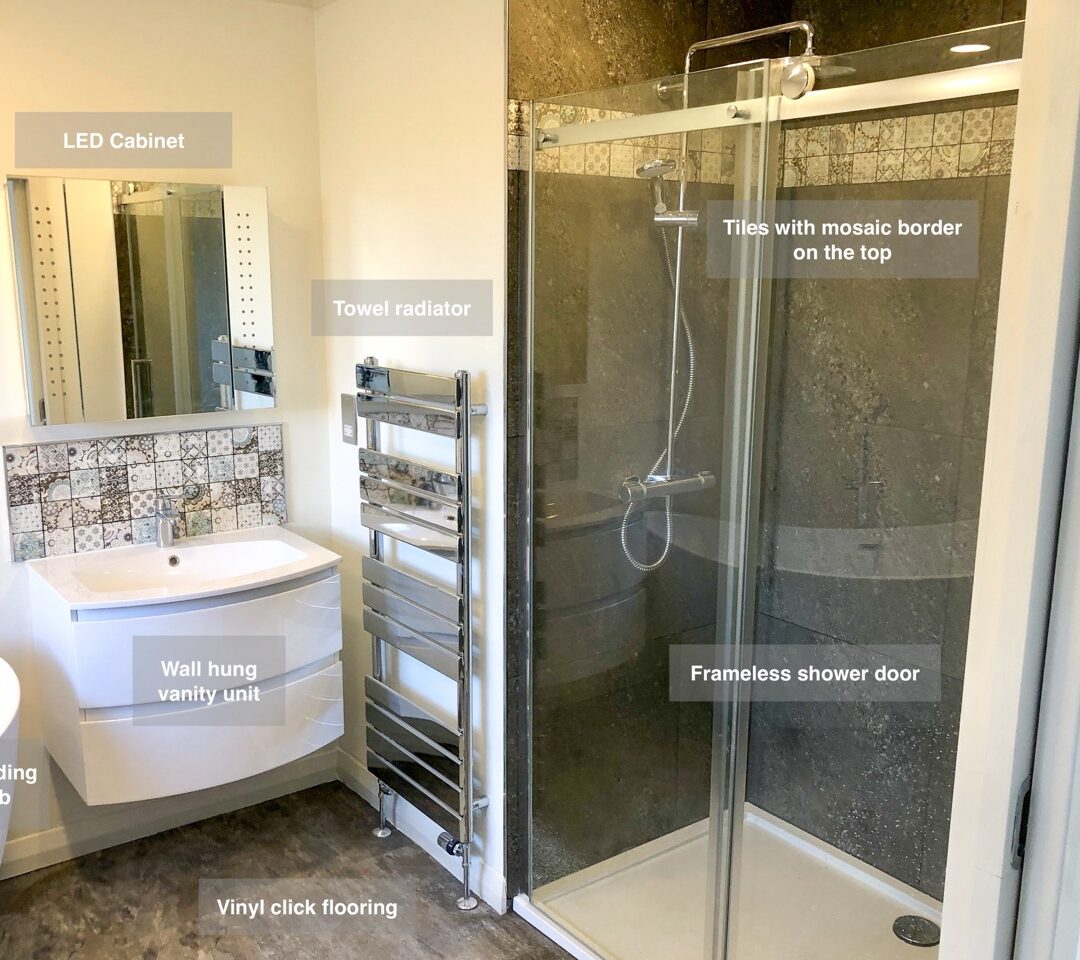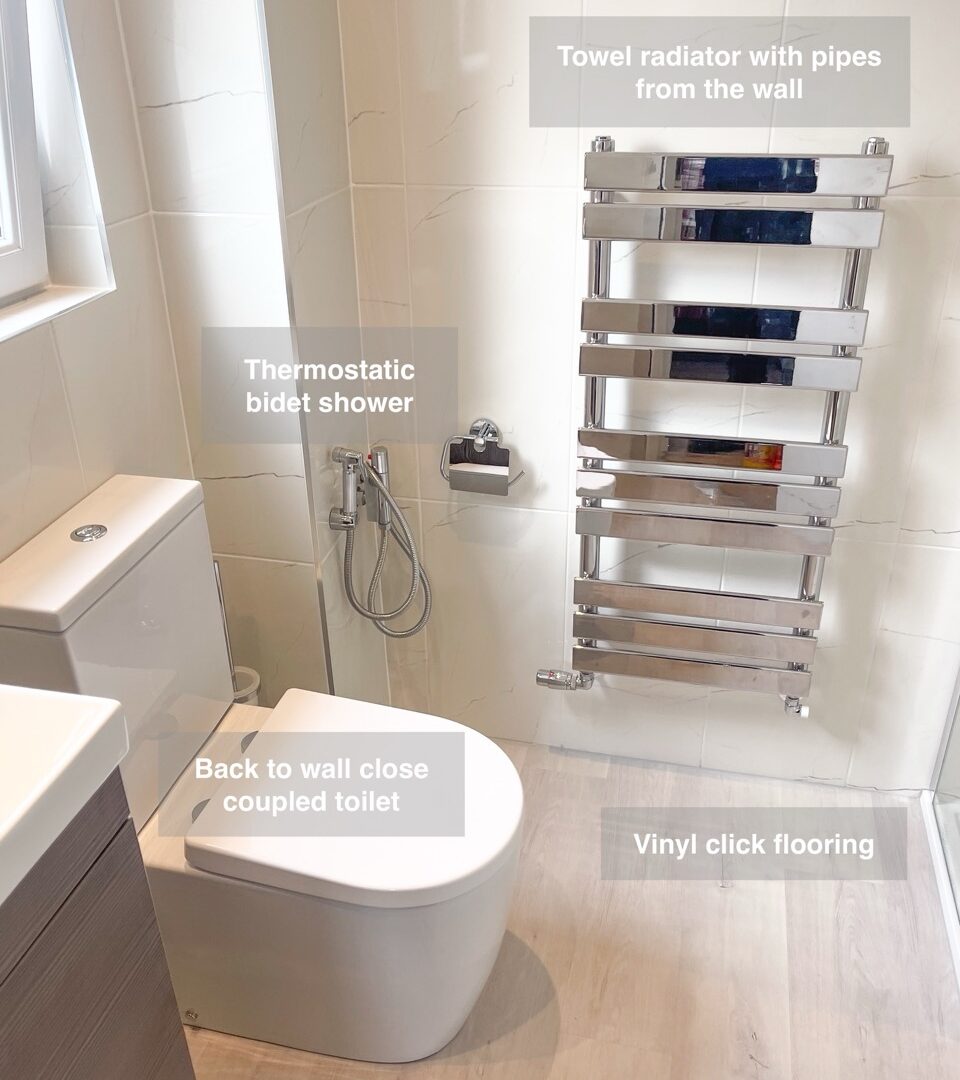Many people don’t like tiles because of the grout. There are 3 ways to overcome this:
- You use very large format porcelain tiles. You can now get tiles as large as the panels (from the floor to the ceiling) and one metre wide. If you have rectified tiles, then the grouting can be as little as 2mm! Rectified tiles are much straighter than ceramic tiles. So you’ll have little to no grouting.
- You use epoxy grout which has much better properties compared to cement-based grout but comes at a cost.
- You use a combination of 1 and 2.
| Advantages | Disadvantages | |
|---|---|---|
| Cement-based grout | ○ Inexpensive ○ Easy to apply (low labour costs) ○ A lot of colours to choose from | ○ It’s actually not waterproof (for shower areas we must apply tanking on the walls before laying tiles) ○ Can stain easily ○ Not very strong, can easily crack |
| Epoxy based grout | ○ Very-very strong, it’s very hard to crack ○ Waterproof ○ Can be used commercially (in fact it’s probably the only commercial option) ○ Very resistant to staining ○ You can use strong chemical without affecting its properties | ○ Expensive ○ Very hard to apply (high labour charges) ○ You get some variation, but just a few colors compared to the cement based one |
Due to the extra costs involved with the epoxy grout, almost all contractors, including us, use the cement-based as default. This solution is ok for most applications, but if you can afford to spend more, then better grouting might be money well spent.
